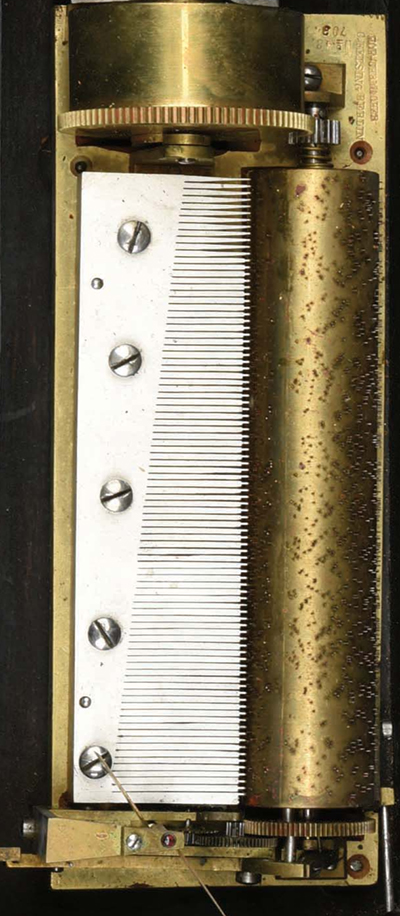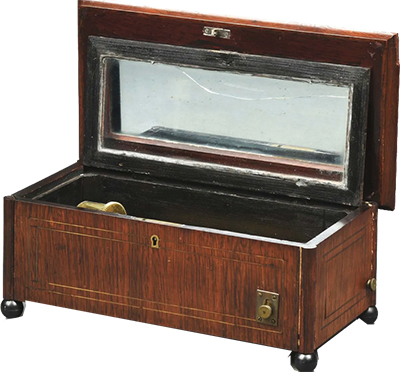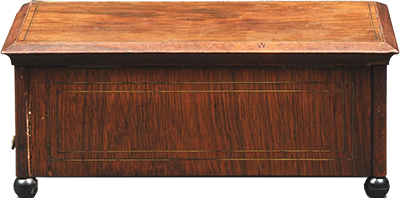    
Maly für Felsing, Berlin, N° 703/48




5.5-inches, 92 teeth


 > >
Small cylinder music box by an obscure maker. 3 tunes on a 5-1/2" cylinder in veneer rosewood case. Mirror back. CONDITION: Repair to one end of the case, and crack in the mirror. Wear throughout, however a rare music box from the German maker. Condition: (Good) Item Dimensions: 10 - 1/4" x 5 - 1/2" x 4 - 1/4".
Tune 1
Kronungs Marsch (Coronation March) (1849) Le prophète was first performed by the Paris Opera at the Salle Le Peletier on 16 April 1849. In the audience at the work's premiere were Chopin, Verdi, Théophile Gautier, Delacroix, Charles Dickens, Ivan Turgenev and Berlioz, among others.[1] The production featured costumes by Paul Lormier and sets by Charles-Antoine Cambon and Joseph Thierry (acts 1 and 4), Charles Séchan (acts 2 and 5), and Édouard Desplechin (act 3). It involved the first use ever on stage of Léon Foucault and Jules Duboscq's electric arc light imitating the effect of sunlight.
Tune 2
Gedanken auf den Alpen, Walzer (Thoughts in the Alps, Waltz), Op. 172 (1855)
Solo horn and clarinet in the opening of this waltz immediately establish the tranquil setting with its alpine echoes, inspired by the scenic mountainous surroundings of Bad Gastein. At the beginning of August 1855 Johann Strauss, on doctors’ orders, again travelled to the spa resort of Bad Gastein, south of Salzburg. Together with his servant, Johann stayed at the newly-built Hotel Straubinger for some six weeks, returning to Vienna in late September.
He brought with him a new waltz, Gedanken auf den Alpen, which he had composed in Bad Gastein, and which he presented for the first time at the “Sperl” dance hall on 15 October 1855 on the occasion of a grand St Theresia Name Day festival. Strauss dedicated his “Gastein Waltz” to the music-loving father of the Empress Elisabeth of Austria, Duke Maximilian in Bavaria (1808–88).
Tune 3
Nachtveilchen, Polka-Mazurka (Dame’s Violet, Polka-mazurka), Op. 170 (1855)
The world of nature was a ready and constant source of inspiration to the Strauss family when seeking to name their innumerable pieces of dance music. Thus, on 1 July 1855 at Unger’s Casino in Hernals, Johann presented his polka-mazurka Nachtveilchen—a plant known to English-speaking countries as dame’s violet or dame’s rocket (Hesperis matronalis) with attractive white, mauve or lilac flowers which give off a scent in the evening.
Lot 2264
Dec 19, 2023
Fotografie: ©Archiv Otmara Seemanna
    
|